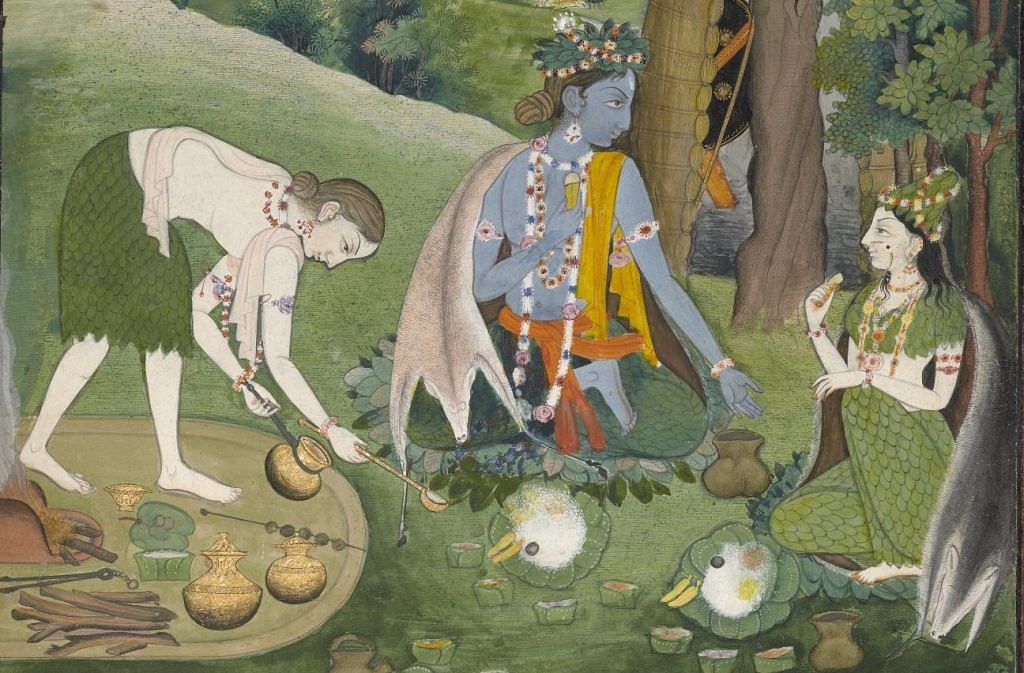Meat eating was the norm right through ancient India, which is why even Emperor Ashoka couldn’t get his family and subjects to give it up.
What did people eat in ancient India? How are menus reconstructed from archaeological remains? What do texts tell us about the culture of food and what are the takeaways from ancient food practices for all of us in contemporary India?
Much of what we know about food consumption comes from the remains of animals and plant species found in places where people lived. At Mohenjodaro, when the first investigations were carried out, the remains of as many as 37 species of animals were recovered. These revealed that the first city-dwellers enjoyed consuming turtles, and relished cattle even more. At any site of the Harappan civilization that has yielded bones, cattle bones have always been found in impressive quantities. Specifically, the teeth of cattle unearthed at these locations provide evidence that the inhabitants slaughtered young animals for food. In much the same way, plant remains range from cereals and lentils to fruits and vegetables, and occasionally even spices used for seasoning. At Harappan Firmana in Haryana, not far from Ashoka University, where I teach, a researcher – Arunima Kashyap – has identified the consumption of brinjals eaten with turmeric and ginger. Her research also shows that leftover food was fed to the household animal, just as it is today. The starch granules scraped from animal teeth here testify to this practice.
Once there is a flowering of various kinds of literature, we are treated to a feast of descriptions around ancient ways of thinking about food. Food theories abound even in texts about subjects like war. The Bhagavad Gita (dated to between 200 BCE and 200 CE), even as it presents the battlefield of Kurukshetra with Krishna and Arjuna, holds forth, without any sense of irony, on different types of food that have the ability to engender particular qualities in those who eat them. So, foods that are cold, stale and highly spiced (“tamasic”) render the eater slothful and dull. Conducive to serenity and spirituality are savoury, nutritive and agreeable foods (“sattvika”). Bitter, sour, salty, pungent and dry foods (“rajasic”) stimulate a person and make him restless. It would, therefore, seem legitimate to ask if Arjuna’s reluctance to fight was because he had been eating the sort of food unsuited to a warrior entering a battlefield.
In the Vedas, some fifty animals were considered to be worthy of sacrifice and, thus, presumably, for eating. As for the Mahabharata, the feastly tales there are better described as beastly ones. Buffalo calves roasted on spits with ghee, large haunches of venison boiled in various ways, meat curries, and dishes of pork and venison, sound far more mouth-watering than the milk and rice, honey and fruit that figure alongside them. Rama and Laxman who, like the Pandavas, hunted animals in the forest during their exile, enjoyed wild meat cooked by Sita.
Meat eating was the norm right through ancient India, which is why Emperor Ashoka’s obsession in getting his family and his subjects to give up its consumption came to nought. After moving to Buddhism, a faith associated with compassion for all life, Ashoka set in motion an administrative process and propaganda to reduce the consumption of meat. There were measures put in place even for the protection of the habitat of living creatures, such as the injunction that husk sheaves in which all kinds of creatures lived must not be burnt or that forests must not be burnt to destroy living beings. On the ground, though, consumption of meat did not reduce, with an overwhelming preference for cattle meat, followed by that of sheep and goat, and many wild animals too, ranging from deer and pigs to cranes and peafowl.
The lesson to be learnt from this is that meat eating then, like meat eating now, could not be stopped by diktat.
